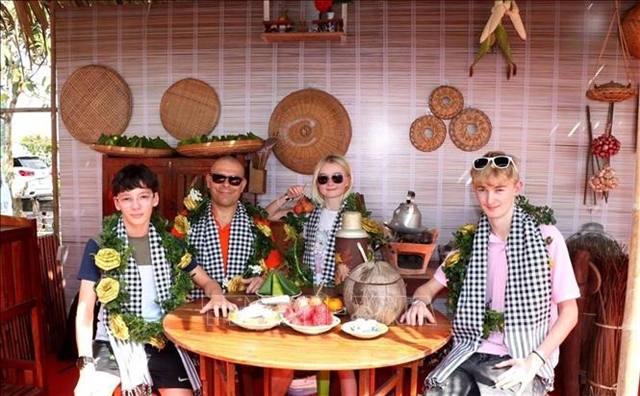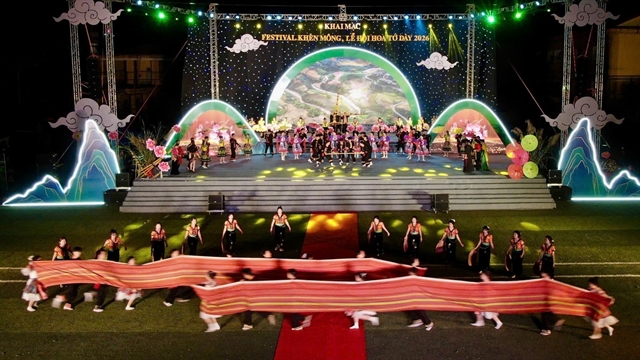 Life & Style
Life & Style

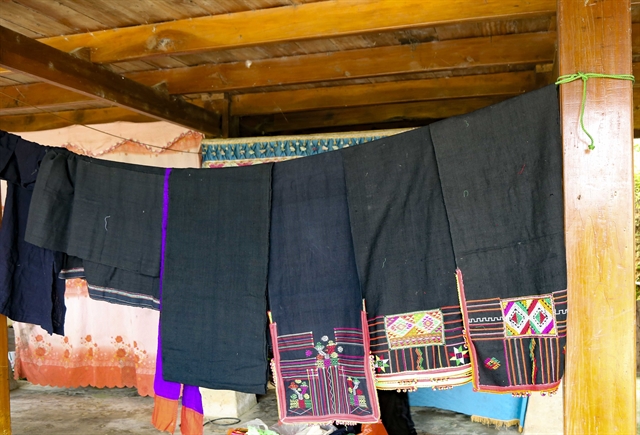 |
| The scarves after being dyed are embroidered with different colours and patterns. |
The Thai are one of the 54 ethnic groups in Vietnam. This ethnic group is the third-largest in the country, with around 1.5 million people, ranking only after the Kinh and Tày groups.
They primarily reside in the northwest of Vietnam, such as Sơn La, Hòa Bình, Điện Biên, Lào Cai, and Lai Châu. The elegance of Thai traditional attire is evident in its graceful style, highlighting the innate beauty of women.
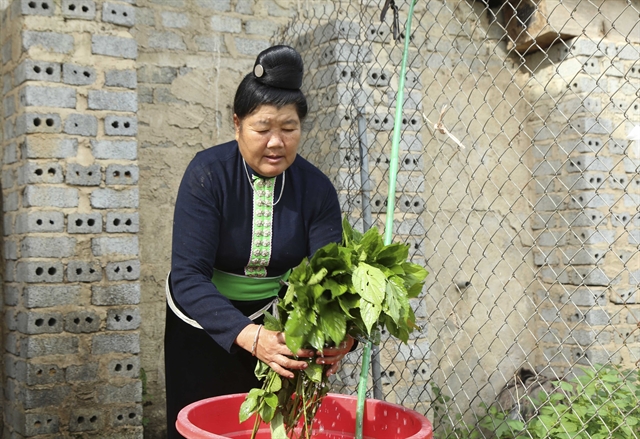 |
| The leaf of the indigo plant is mixed up and ground with lime powder and submerged in water to make a pulp. |
A traditional Thai costume comprises a cropped shirt, a lengthy gown, a skirt, a waistband, a scarf, a hat, and a sarong. Accessories typically encompass necklaces, earrings, bracelets, and sarongs. Every element bears significance in Thai attire, distinguishing between the clothing worn by young, mature, unmarried, or married women.
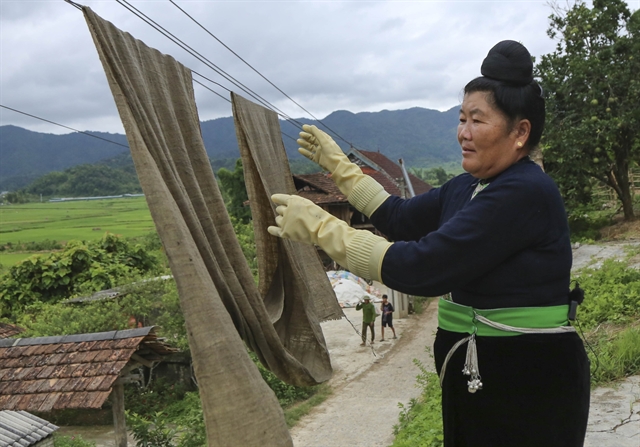 |
| After dyeing, the fabric is hung out to dry without washing. The process is repeated over seven days. |
Presently, the attire of this ethnic collective has undergone certain enhancements. Previously, the elders would don indigo-dyed skirts crafted from self-woven fabric.
The Thai community residing in Che Căn Village, Mường Phăng Commune, in the northern province of Điện Biên, perseveres with their traditional dyeing method employing the indigo plant for their customary clothing.
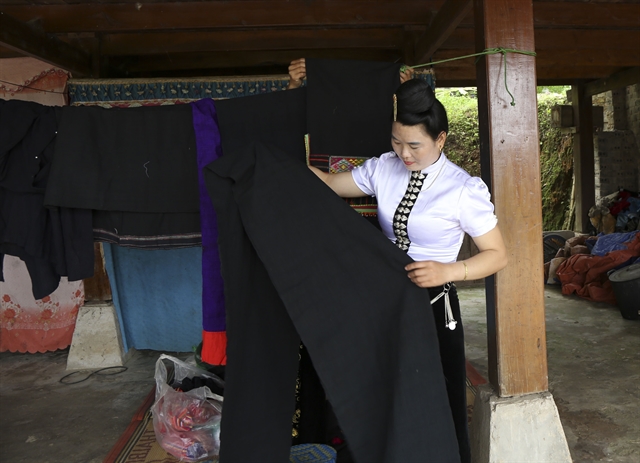 |
| After dyeing the cloth is used to make a skirt, belt and scarf. |
The dye is derived from the indigo plant, cultivated in the mountains, necessitating approximately 3 months for cultivation. Following harvest, the plant's leaves are blended and crushed with lime powder before being immersed in water to create a paste.
Upon readiness, the dye demands consistent upkeep to achieve the desired hue. Fluctuations in temperature and humidity can impact it; even unfortunate occurrences such as a village member's passing can be regarded as detrimental to the colour's integrity.
 |
| The fabric after being dipped in indigo is squeezed and beaten with a pestle so that the colour is evenly absorbed. VNA Photos Xuân Tư |
The dyeing procedure itself consumes a substantial duration, involving the fabric being immersed in the dye multiple times over a span of 3-4 days, dependent on the desired colour intensity.
Subsequently, the fabric is soaked in a blend of water, salt, lemon, and bitter leaves to secure the colour. VNS




